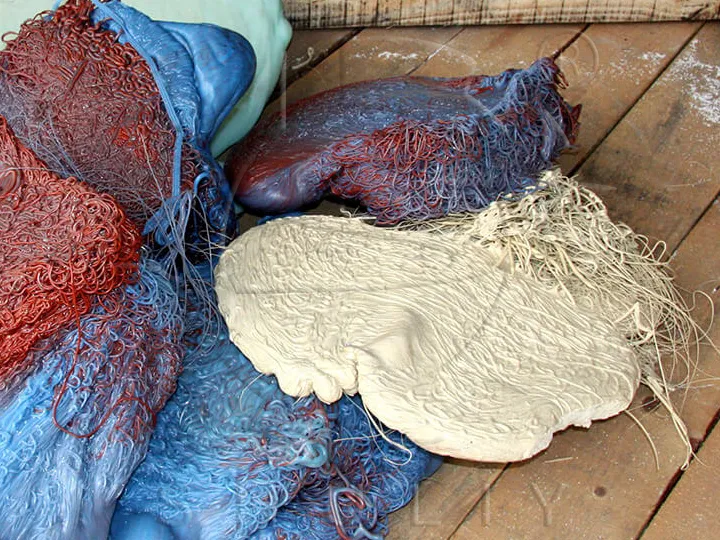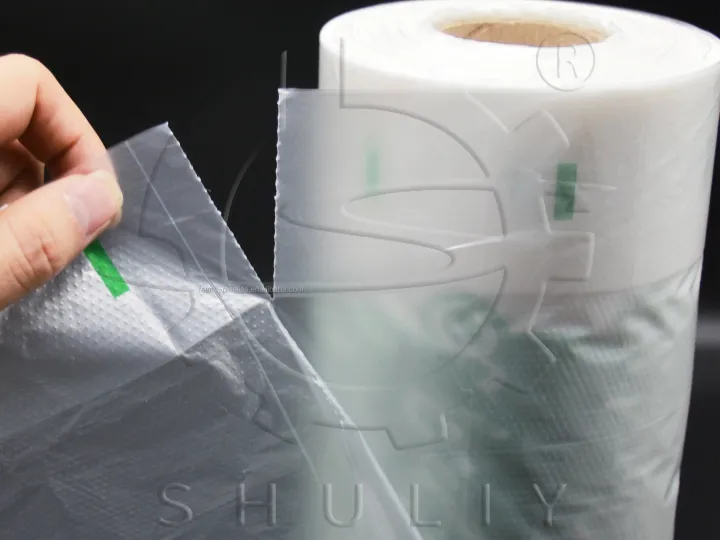In industrial plastic production, some waste plastics fail to meet production standards. Recycling this post-industrial waste is not only economically advantageous but also helps decrease the amount of waste sent to landfills. So, how can we recycle these materials? This article offers guidance on extrusion scrap recycling.

What Are HDPE Extrusion Scraps And Why We Recycle Them?
In the plastic extrusion or injection molding process, the excess plastic waste that comes out of the head is the head material. These heads are not externally contaminated and have the same properties as the plastic product, so they have a high recycling value and can be recycled and reused in the production of new plastics.
Internal recycling of post-industrial plastic waste, represented by machine-end materials, can reduce the production cost of new plastic products, increase the utilization rate of plastics, and promote the development of the circular economy.


What Are The Challenges Of Headstock Recycling?
- The Head Runner Plastic is irregular in shape and may be larger in size, which is not easy to recycle directly and may cause jamming, etc. A powerful crusher is needed to crush the materials into small, uniform pieces that are convenient for further processing and easy to store and transport.
- Although the Die Head Waste Plastic is not contaminated from the outside, it may be contaminated with some dust, oil, etc. after a long period of cooling and storage. It must be cleaned and dried in conjunction with a high-efficiency plastic washing system.
- During previous processing, the headstock has been subjected to repeated heating, which may result in deterioration of the material properties. Therefore, in the extrusion scrap recycling process, it is necessary to select pelletizing equipment with a sensitive temperature control system to adjust the temperature at any time to avoid overheating and damaging the properties of the plastic.

How To Recycle Post-industrial Plastic Waste?
The extrusion scrap recycling process can be broken down into the following steps:
- Crushing: Use a powerful plastic shredder to crush large pieces of the irregular headstock for easy storage, transportation, and granulation.
- Cleaning: Plastic flakes are transported to the plastic washing tank, which can be combined with detergents, etc. to effectively remove stains and impurities and ensure the purity of the final granules.
- Pelletizing: The clean plastic pieces are melted and extruded by plastic granulator machine, determining the size and dimensions of the recycled plastic pellets. The extruded plastic is then cooled and formed into uniform and high-quality pellets.
- Drying: Finally, the pellets are dried using plastic drying machine for easy storage.
With the above recycling steps, we can realize the efficient transformation of post-industrial waste plastics into recycled pellets. These pellets can be used in the manufacture of new plastics and have a high value in use.


Applications of Recycled HDPE Granules
The HDPE headstock is still of high utility value after recycling and has the following characteristics:
- High pressure and corrosion resistance make it suitable for manufacturing plastic pipes.
- Strong tensile properties enable its use in the production of garbage bags, shopping bags, and various packaging products.
- Excellent toughness allows for its application in the injection molding process, including the production of HDPE plastic drums and other daily necessities.
- Effective sealing and good impact resistance make it ideal for the blow molding process, such as producing detergent bottles.
- Good insulation properties allow it to be used as a cable protection cover.


Efficient Solutions for Extrusion Scrap Recycling
Knowing the above about hdpe in-plant extrusion scrap recycling, it is also important to find the right recycling equipment.Shuliy’s plastic granulators can efficiently achieve the manufacturing of recycled pellets. In addition to HDPE, it can also be widely used for PP, PE, PVC and so on.
With low energy consumption, high efficiency, and no lagging, our machines have been successfully sold to many countries, helping customers around the world to promote the circular economy in their companies. In addition, we provide technical support, on-site installation, a one-year warranty, and other complete after-sales services. If you need to, please tell us your raw material and production situation, and we will design the best recycling program for you!



